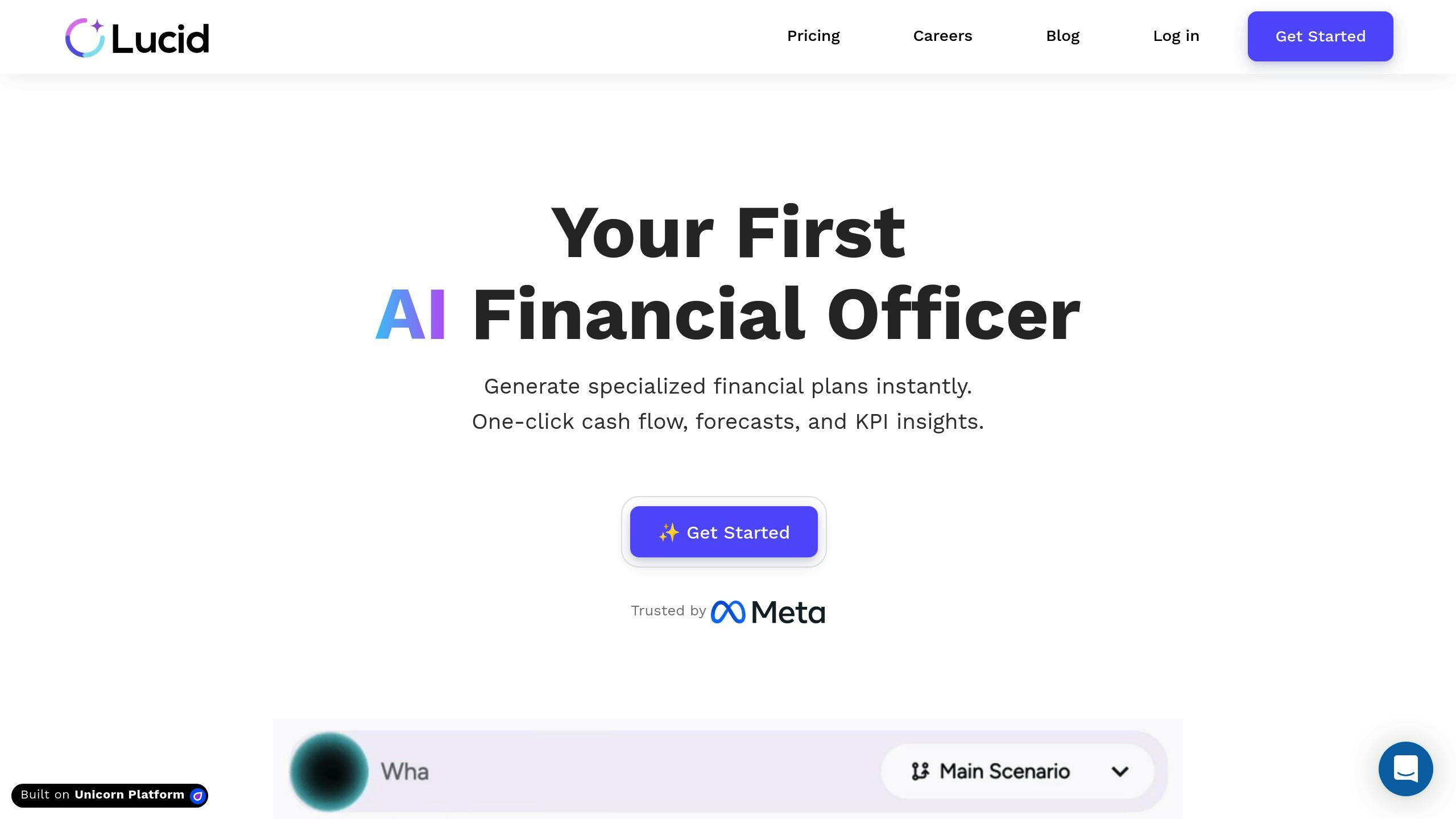MRR (Monthly Recurring Revenue) and ARR (Annual Recurring Revenue) are essential for startups to measure predictable income and showcase growth potential. Here's what you need to know:
- MRR: Tracks monthly subscription revenue. Example: 100 customers × $50 = $5,000/month.
- ARR: Annualized version of MRR. Example: $5,000 MRR × 12 = $60,000/year.
- Why They Matter: MRR helps manage cash flow; ARR highlights long-term growth for investors.
- Key Metrics for Growth: Focus on reducing churn, upselling, and optimizing pricing to boost revenue.
| Metric | Best For | Timeframe | Insight |
|---|---|---|---|
| MRR | Monthly subscriptions | 30-day cycles | Tracks short-term cash flow |
| ARR | Annual contracts | Yearly trends | Highlights growth for investors |
Start tracking these metrics accurately to attract investors, forecast growth, and improve financial health.
Monthly Recurring Revenue (MRR) and Annual Recurring Revenue (ARR) Explained
Calculating MRR and ARR
Startups depend on accurate MRR (Monthly Recurring Revenue) and ARR (Annual Recurring Revenue) calculations to measure growth effectively. Building on the basics mentioned earlier, here’s how to calculate them step by step.
How to Calculate MRR
The formula for MRR is simple:
Base MRR = Total paying customers × Average recurring revenue per user (ARPU)
But for a full picture, you need to include all revenue changes. Here's a breakdown:
| Component | Formula | Example |
|---|---|---|
| Base MRR | Active subscriptions | 100 customers × $50 = $5,000 |
| Expansion MRR | Revenue from upgrades | 10 upgrades × $20 = $200 |
| Contraction MRR | Revenue lost from downgrades | 5 downgrades × -$10 = -$50 |
| Net MRR | Base + Expansion - Contraction | $5,000 + $200 - $50 = $5,150 |
How to Calculate ARR
For ARR, the formula depends on your subscription model:
- ARR = MRR × 12 (for monthly subscriptions)
- OR: (Annual subscriptions + Monthly subscriptions × 12) - Discounts
This aligns with benchmarks like the $1.8M ARR target for Series A startups.
"Accurate MRR and ARR calculations are the lifeblood of SaaS startups. They quantify financial health and investor appeal." – Sarah Johnson, CFO of TechStars, SaaS Financial Metrics Report 2024
Avoiding Common Calculation Errors
Mistakes in MRR and ARR calculations can lead to misleading metrics. Here are some frequent errors and how to fix them:
| Mistake | Impact | Solution |
|---|---|---|
| Including one-time fees | Inflates recurring revenue | Exclude setup fees and professional services |
| Ignoring discounts | Overestimates revenue | Deduct all recurring discounts |
| Mixing subscription periods | Skews monthly figures | Convert all subscriptions to monthly values |
| Double-counting upgrades | Exaggerates growth | Track only the added revenue from upgrades |
To simplify and ensure accuracy, tools like Lucid Financials can automate these calculations and integrate seamlessly with platforms like QuickBooks.
Strategies to Increase MRR and ARR
Boosting Monthly Recurring Revenue (MRR) and Annual Recurring Revenue (ARR) depends on three main factors: cutting churn, expanding through upselling, and fine-tuning pricing strategies. Companies focused on retention can see profits grow by 25-95% with just a 5% improvement in churn rates [1].
Reducing Churn
Here are some effective ways to keep customers engaged:
| Strategy | Impact | Example |
|---|---|---|
| Customer Education | 16% drop in churn | Dropbox uses onboarding emails |
| Health Monitoring | 22% boost in retention | HubSpot's AI-driven health score system |
"The key to reducing churn is to create a product that becomes an indispensable part of your customers' daily workflow." - David Cancel, CEO of Drift, Forbes Technology Council
Upselling and Cross-Selling Techniques
Slack's pricing model is a great example of how upselling can work. It led to a 35% increase in conversions by using:
- Feature-based upgrades tied to how users interact with the product
- Limited-time offers for annual subscriptions
- Account reviews to uncover upgrade opportunities
- In-app prompts guiding users toward premium features
Pricing Model Optimization
Fine-tuning your pricing strategy can have a big impact on recurring revenue. Here are some effective approaches:
- Value-based pricing (ideal for enterprise SaaS): Can improve conversions by 25-40%
- Tiered pricing (for multiple customer segments): Can increase ARPU by 35%
- Usage-based pricing (popular for API services): Helps retain 45% more customers
Tools like Lucid Financials can help you simulate different pricing scenarios, benchmark against industry standards, and measure the effect on your recurring revenue.
sbb-itb-17e8ec9
Using MRR and ARR for Growth
Financial Forecasting with MRR and ARR
MRR (Monthly Recurring Revenue) and ARR (Annual Recurring Revenue) are more than just numbers - they're tools for shaping your business strategy. By blending past performance with current market conditions, you can create more informed forecasts.
| Forecast Component | Key Metrics | Impact on Planning |
|---|---|---|
| Growth Trajectory | Monthly growth rate, seasonality | Guides hiring and resource allocation |
| Customer Behavior | Churn rate, expansion revenue | Shapes customer success and retention efforts |
| Market Dynamics | Industry benchmarks, competition | Helps refine pricing and product strategies |
Attracting Investors with MRR and ARR
Investors don’t just look at the numbers - they want the story behind them. MRR and ARR offer a snapshot of the health and growth potential of your business, but investors will dig deeper into the quality and sustainability of your revenue.
Here’s what investors focus on:
- Growth speed: Includes benchmarks like the 22% median growth rate for SaaS companies.
- Revenue quality: Metrics like retention and expansion revenue are critical.
- Unit economics: Ratios such as CAC (Customer Acquisition Cost) to LTV (Lifetime Value) are key indicators of efficiency.
Monitoring Trends for Decision-Making
Tracking trends in MRR and ARR can unlock actionable insights. For example, one SaaS company increased its enterprise customer base by 7% quarterly by focusing on ARR-specific strategies.
Focus on these areas to stay ahead:
- Customer cohort performance: Understand how different customer groups behave over time.
- Pricing impact: Evaluate how pricing changes affect revenue.
- Retention initiative ROI: Measure the effectiveness of your efforts to keep customers.
Leveraging tools like AI-powered platforms can make it easier to analyze these metrics and uncover opportunities across customer segments. This data-driven approach ties back to earlier strategies, creating a feedback loop that fuels growth and optimizes revenue.
Tools for Tracking MRR and ARR
Using the right tools to track MRR (Monthly Recurring Revenue) and ARR (Annual Recurring Revenue) can make a big difference in how startups analyze and act on their data. Today’s platforms go beyond the basics, offering features that help businesses predict trends and make smarter decisions.
Key Features to Look For in MRR/ARR Tools
According to the SaaS Metrics Report 2024, specialized tools can improve forecasting accuracy by 28%. When choosing a platform, focus on tools that are both powerful and easy to use.
| Feature Category | Capabilities |
|---|---|
| Data Processing | Real-time calculations, cutting errors by 85% |
| Integration | Seamless connections with CRMs and payment processors |
| Analytics | Cohort analysis and detailed dashboards |
| Reporting | Custom dashboards and automated reports |
A great example is ChartMogul, which has a 4.5/5 rating on G2 from over 150 reviews. One enterprise SaaS company reported a 15% boost in forecasting accuracy just three months after adopting the tool.
Why Lucid Financials Stands Out

Basic tools can handle simple calculations, but platforms like Lucid Financials go further, offering deeper insights that help refine strategies and track progress.
- Real-Time Data Processing: Lucid Financials integrates with QuickBooks to update MRR and ARR instantly, cutting out delays caused by manual data entry.
- Advanced Scenario Planning: It allows you to model different pricing strategies and growth scenarios, helping you see potential outcomes before making decisions.
These features directly support revenue optimization efforts while ensuring you stay on top of key metrics.
To maximize the value of these tools, configure them to focus on metrics like:
- Customer acquisition costs compared to MRR
- Trends in expansion revenue
- Churn rates by customer segment
- Indicators of revenue growth speed
Conclusion: Key Points for Startups
MRR and ARR are crucial for determining a startup's funding prospects and growth potential. These metrics become even more impactful when applied to financial forecasting, as discussed earlier.
Tracking these metrics systematically is essential for growth. Companies using automated systems have seen funding success rates triple, while manual calculations often result in errors, as highlighted in the common mistakes section.
Using MRR/ARR for Actionable Insights
-
Focus on Revenue Quality
- Exclude one-time income.
- Identify and target profitable customer segments.
- Measure upsell revenue.
-
Plan Strategic Growth Initiatives
Before expanding into new markets, focus on retention programs, value-based pricing, and validating your metrics. -
Leverage Data for Smarter Decisions
Modern financial tools, like those mentioned in the tools section, have revolutionized metric tracking and analysis. They offer:- Real-time updates on key metrics.
- Advanced forecasting options.
- Automated, easy-to-read reports.
FAQs
How to increase annual recurring revenue?
Boosting annual recurring revenue (ARR) involves a mix of retaining existing customers, upselling, and strategic pricing. Here's a breakdown:
Focus on Customer Retention
Even a small retention boost - just 5% - can increase profits by 25-95% [1]. Keeping customers engaged and satisfied is key.
Adopt Value-Based Pricing
This approach ensures your pricing reflects the value customers receive. Refer back to Section 3 for detailed strategies.
Essential Customer Success Tactics:
| Strategy | How to Apply |
|---|---|
| Regular Check-ins | Conduct quarterly reviews |
| Health Monitoring | Use automated tracking tools |
Tap Into Expansion Revenue
Existing customers are your best bet for growth, with a 60-70% chance of converting compared to new leads [2]. Consider these methods:
- Offer usage-based upsells
- Create bundles of complementary products
- Provide incentives for annual commitments
Real-World Example: Slack
Slack grew its ARR from $902 million to $1.5 billion in 2022 - a 66% jump - by focusing on enterprise adoption and continuously improving its product [3].


